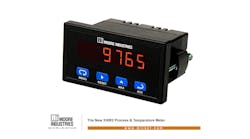GE installed a new wastewater aeration control system at the Bird Island Wastewater Treatment Plant in Buffalo, N.Y., which is projected to save the city more than $350,000 a year in energy costs.
GE delivered a Roots wastewater aeration control system for the plant’s 32 wastewater aeration basins, replacing an older system. The new system has significantly improved the stability of the plant’s wastewater aeration control process and also is capable of handling fluctuations in loading, which has allowed the plant to operate some of its wastewater aeration basins at dissolved oxygen (DO) set points well below the norm. This is providing additional energy savings.
The New York State Energy Research and Development Authority (NYSERDA) completed a measurement and verification review of the Bird Island plant at the end of February. This review showed higher than expected energy savings, with projected annual savings of $357,000, much of which can be attributed directly to the plant”s new wastewater aeration control system.
|
Related Content: – “VIDEO: How Green Infrastructure Is Helping Combat Combined Sewer Overflows” Related Links: |
The Roots wastewater aeration control system supplied by GE features a flow-based strategy where each individual DO probe is used to calculate the air requirement for each control zone. As data is collected, the wastewater aeration control system calculates the total air flow requirement for all of the 32 zones, and the change in air flow requirement is communicated to the blower control panel. The “DO-to-flow” concept also enables the use of “true” most-open-valve logic, where at least one valve is in the fully open position at all times. This reduces the system header pressure, which in turn reduces the load on the blowers and reduces the amount of energy needed to move the required amount of air.

